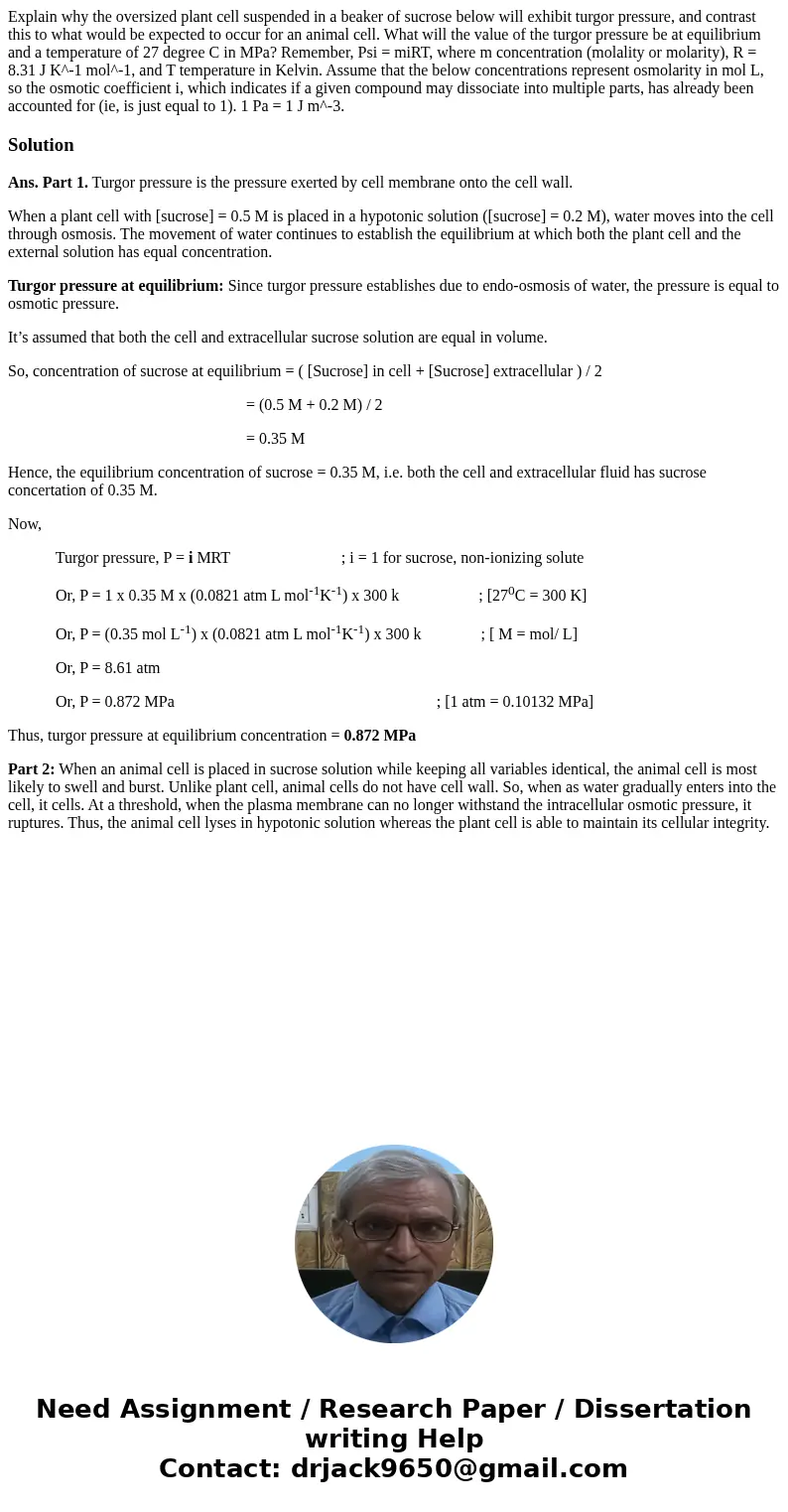Explain why the oversized plant cell suspended in a beaker o
Solution
Ans. Part 1. Turgor pressure is the pressure exerted by cell membrane onto the cell wall.
When a plant cell with [sucrose] = 0.5 M is placed in a hypotonic solution ([sucrose] = 0.2 M), water moves into the cell through osmosis. The movement of water continues to establish the equilibrium at which both the plant cell and the external solution has equal concentration.
Turgor pressure at equilibrium: Since turgor pressure establishes due to endo-osmosis of water, the pressure is equal to osmotic pressure.
It’s assumed that both the cell and extracellular sucrose solution are equal in volume.
So, concentration of sucrose at equilibrium = ( [Sucrose] in cell + [Sucrose] extracellular ) / 2
= (0.5 M + 0.2 M) / 2
= 0.35 M
Hence, the equilibrium concentration of sucrose = 0.35 M, i.e. both the cell and extracellular fluid has sucrose concertation of 0.35 M.
Now,
Turgor pressure, P = i MRT ; i = 1 for sucrose, non-ionizing solute
Or, P = 1 x 0.35 M x (0.0821 atm L mol-1K-1) x 300 k ; [270C = 300 K]
Or, P = (0.35 mol L-1) x (0.0821 atm L mol-1K-1) x 300 k ; [ M = mol/ L]
Or, P = 8.61 atm
Or, P = 0.872 MPa ; [1 atm = 0.10132 MPa]
Thus, turgor pressure at equilibrium concentration = 0.872 MPa
Part 2: When an animal cell is placed in sucrose solution while keeping all variables identical, the animal cell is most likely to swell and burst. Unlike plant cell, animal cells do not have cell wall. So, when as water gradually enters into the cell, it cells. At a threshold, when the plasma membrane can no longer withstand the intracellular osmotic pressure, it ruptures. Thus, the animal cell lyses in hypotonic solution whereas the plant cell is able to maintain its cellular integrity.

 Homework Sourse
Homework Sourse